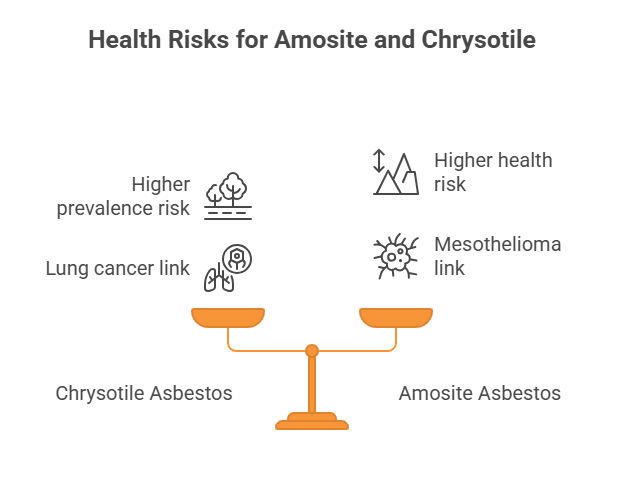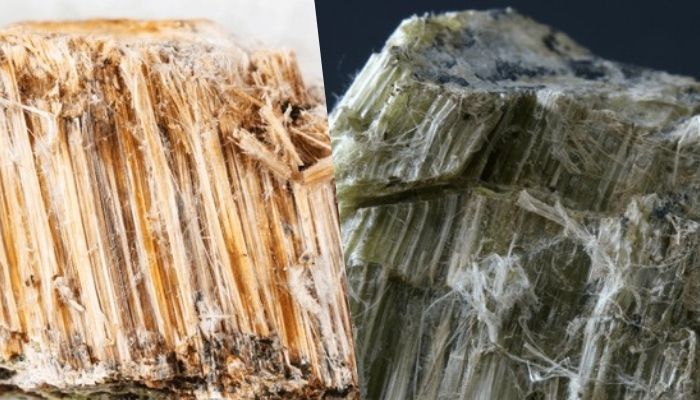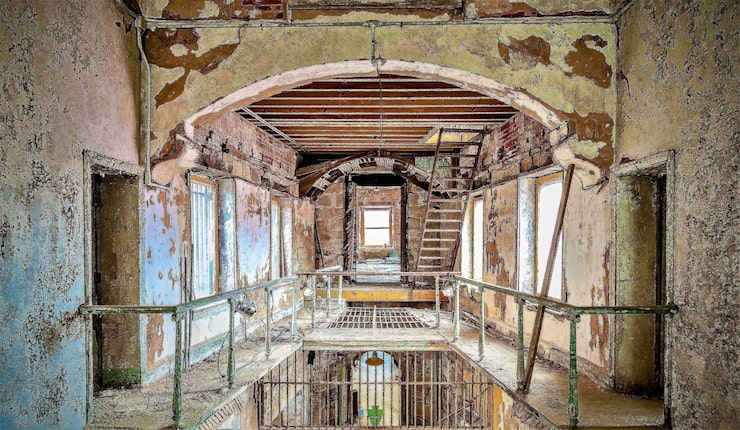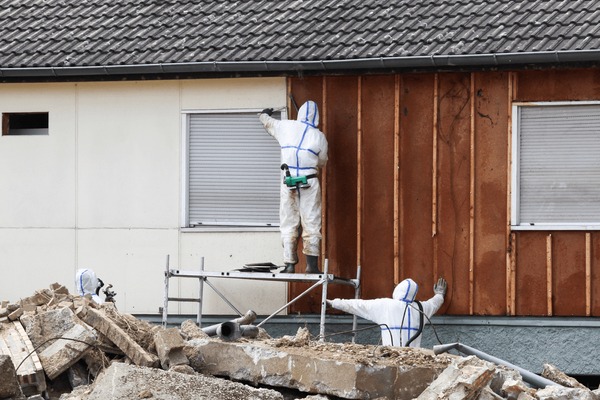While all asbestos is hazardous, not all types carry the same level of risk. Based on their structure, they can be classed into two groups: the serpentine group (chrysotile) and the amphibole group (amosite). Owing to their heat-resistant properties, asbestos was once a popular construction material. However, asbestos is a highly hazardous material, causing lung cancer and asbestosis, which is why proper remediation is essential for asbestos-containing materials.
Let’s take a look at the key differences between amosite and chrysotile asbestos, how they affect your health, and how they should be safely disposed of in Australia.
What Is Amosite (Brown Asbestos)?
Amosite, also called brown asbestos, is a naturally occurring mineral that has long, needle-like fibers. The name amosite came from AMOS, i.e., Asbestos Mines of South Africa, where it was predominantly mined.
This amphibole asbestos variety has a double-chain structure that consists of iron and magnesium silicate, the chemical formula being Fe7Si8O22(OH)2. It has harsh, spiky fibers with good tensile strength and excellent heat resistance. Thus, it is widely used in cement sheets, insulation, and fireproofing.
However, the material is extremely brittle and friable, posing a high risk to human health when disturbed. The straight needle-like fibers penetrate deeply into the lungs, posing significant health risks. This is why it is strongly linked to mesothelioma and lung cancer.
What Is Chrysotile (White Asbestos)?
Chrysotile, also known as white asbestos, is a naturally occurring fibrous silicate mineral. This variant is far more common than amosite, contributing to 95% of asbestos use all over the world. In fact, over 90% of asbestos used in Australia before the 1990s was chrysotile.
This serpentine variety of asbestos is characterised by long, curly, scroll-like tubular fibers that are flexible with high tensile strength. It is found in roofs, ceilings, walls, and even brake pads of vehicles.
While the fibers are less likely to embed deeply in the lungs, but still hazardous. This makes this an inhalation hazard, often leading to serious and fatal diseases like asbestosis, lung cancer, and mesothelioma. Further, the delayed onset effects of asbestos exposure can lead to health risks.
While chrysotile asbestos is still used in some countries, its use is fully banned in Australia.
Amosite vs. Chrysotile: A Tabular Comparison
A clear, concise comparison between the two popular asbestos variants, amosite and chrysotile, is as follows:
| Feature | Amosite (Brown) | Chrysotile (White) |
|---|---|---|
| Fibre Shape | Straight, needle-like | Curved, flexible |
| Friability | High | Medium |
| Common Uses | Insulation, cement boards | Roofing, walls, floor tiles |
| Health Risk | Very High | High |
| Still Found In Homes? | Yes | Yes |
Table 1: Feature-wise Comparison Between Amosite and Chrysotile Asbestos
Risk Levels – Which Is More Dangerous?
The different types of asbestos fibres can be linked to the respective long-term health risks. For instance, chrysotile asbestos is linked to lung cancer, while amosite is linked to mesothelioma.
Chrysotile asbestos is classified as carcinogenic by the International Agency for Research on Cancer (IARC). Though some may feel that this serpentine variety is less harmful, it is more prevalent and should not be overlooked due to its less “aggressive” reputation. Inhaling chrysotile asbestos fibers is linked to bronchial carcinoma. Further, smokers have a much higher chance than others of developing lung cancer.
On the other hand, Amosite is linked to mesothelioma. Due to its friability and long, straight, needle-like fibres, it generally poses a higher health risk. In fact, exposure to amosite even at lower levels can pose significant health risks. Alongside mesothelioma, amosite is also linked to pleural thickening and lung cancer.

Remediation Strategies – Amosite vs. Chrysotile
Both types of asbestos must be disposed of by licensed asbestos professionals in Australia. However, the remediation steps and requirements have certain differences.
For amosite, the complexity of disposal is higher due to the more friable nature of the material. Further, full PPE (personal protective equipment), including respirators and disposable suits, is a must during the disposal of amosite. Due to high friability, encapsulation is not recommended for amosite. Additionally, strict air monitoring is a necessity in spaces where the presence of amosite asbestos has been detected.
In contrast, chrysotile asbestos is less friable and thus easier to dispose of. However, remediation experts have to wear the standard PPE gear. Air monitoring for asbestos fibres is also important. However, this can be encapsulated if the asbestos-containing material has not turned friable.
Tabular Comparison of Remediation Techniques
To understand the remediation techniques at a glance, you can refer to the following comparison table:
| Factors | Amosite (Brown) | Chrysotile (White) |
|---|---|---|
| Disposal Complexity | High – more precautions needed | Medium – still regulated |
| PPE Requirements | Full respirator, disposable suits | Standard full PPE |
| Air Monitoring | Strongly recommended and often mandatory | Often required |
| Encapsulation Option | Rarely recommended | Sometimes viable if stable |
| Disposal | As per state regulations (Class A waste) | Same, typically Class B |
Table 2: Disposal Technique Comparison for Amosite and Chrysotile Asbestos
Legal and Regulatory Framework in Australia
All asbestos, whether used in buildings or machine parts, has been banned in Australia since 2003. Each state in Australia has its own rules and legislation to govern the presence of asbestos and remediation. However, these are all based on guidelines set by Safe Work Australia.
Further, only certified people can handle asbestos remediation and disposal. For instance, for the disposal of asbestos, the following certification is necessary:
- Amosite and other friable variants require a Class A licensed Removalist.
- For non-friable asbestos, a Class B Removalist is needed.
- An asbestos assessor will conduct monitoring, inspections, and issue clearance certificates.
Additionally, every workplace has to do the following to maintain compliance with the asbestos management framework:
- Risk assessment of asbestos airborne.
- A well-designed asbestos management plan.
- Maintenance of asbestos registers.
Identifying and Testing for Asbestos
Identifying asbestos is essential before undertaking renovations. This includes testing for suspicious materials, which includes:
- Checking the joints on building materials for asbestos.
- Inspect the surface pattern of roofs, walls, and floors.
- Check the insulation on HVAC and heating systems.
- Check the finishings like window putty, cowls, ductwork, and carpet underlay.
DIY kits are available for asbestos detection. However, results from these might not be accurate. That is why a professional asbestos inspection with certified experts is highly recommended. Further, asbestos remediation service providers use NATA-accredited labs for testing the presence of asbestos, which further attests to the accuracy of the results.
Summary – What You Need to Know About the Asbestos Types
Amosite is more dangerous per gram, but chrysotile is more common in homes and workplaces. Both types of asbestos require strict, safe, and effective remediation protocols. This makes it important to use licensed professionals to avoid legal risk and health hazards.
Identifying Asbestos Types for Accurate Remediation
Are you suspecting there is asbestos in your home or workplace? Contact a licensed disposal specialist who has expertise in safe disposal, air monitoring, and site clearance certification.
Frequently Asked Questions
Which Form of Asbestos is More Likely to Be Present Around HVAC ducts?
Old HVAC ducts were made up of about 15% chrysotile asbestos. However, amosite and crocidolite asbestos might be found in certain thermal insulation products.
Why Were Chrysotile and Amosite Used in Construction?
Both chrysotile and amosite asbestos were used in construction due to their insulating and fire-resistant properties. Further, they are also used as insulation for HVAC, pipes, and boilers.
Why is Amosite Considered More Hazardous Than Chrysotile Asbestos?
Amosite asbestos has straight, sharp, rigid fibres that get lodged deep within the lung tissue and are difficult to clear. In contrast, chrysotile asbestos has curly, flexible fibres, making them less biopersistent.
When Do I Need Professional Help Regarding Asbestos?
If you can see the asbestos-containing material look friable, conducting major repairs, or undertaking renovation, remodelling, or demolition, it is important to seek professional asbestos remediation services.





